An art form considered to be an extension of the exaggerated dramatic effects used by the Baroque artists in the 17th and 18th centuries emerged in France during the 1730s. It’s therefore sometimes referred to as “Late Baroque” as well.
Rococo artists took it a step further and often integrated optical illusions that focused on a particular motion. One of the leading experts of this particular art movement in the 18th century was also one of the most celebrated artists of his time.
In this article, you’ll discover some of the most interesting facts about François Boucher, a man who created some of the most idyllic paintings in history.
1. He was born in Paris and initially trained by his father
François Boucher (1703-1770) was born in Paris in the early 18th century, a time when the formal Louis XIV style, also referred to as “French Classicism,” was running on its last legs.
It was the father of the young François, Nicolas Boucher, an amateur artist himself, who initially trained his son. He quickly exceeded the talent of his father and was spotted by artists during his teenage years.
As a teenager, Boucher was apprenticed by both French Rococo painter François Lemoyne and engraver and printer Jean-François Cars.
It was during this early period in his life that he was exposed to various forms of art and more importantly, the emerging Rococo art movement which was formed as a response to the geometric Louis XIV style.
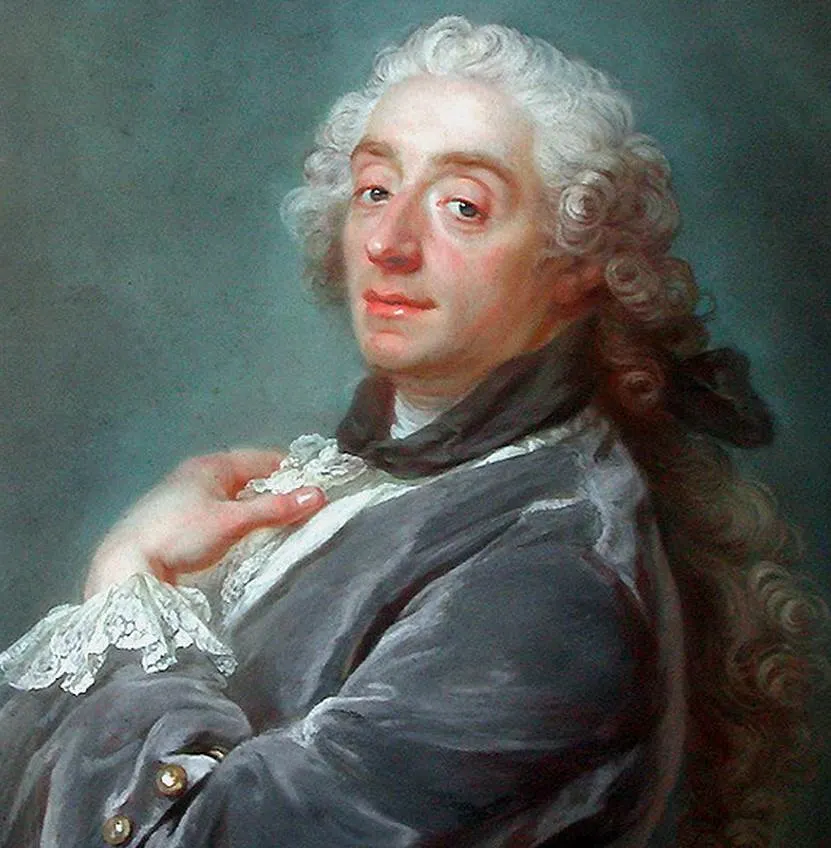
2. He won a prestigious price during his teens and studied in Rome
At the age of 17 in 1720, after a couple of years under the apprenticeship of leading artists of the time, François Boucher won the “Grand Prix de Rome.”
This prestigious prize, which automatically resulted in a scholarship to study art in Rome, was remarkably established during the reign of Louis XIV himself in the year 1663. The winners of this prize were able to study in Rome for 3 to 5 years at the expense of the state.

Unfortunately for Boucher, he didn’t manage to travel to Rome immediately because the Académie royale de Peinture et de Sculpture, the institution that awarded the prize, was facing financial difficulties at the time.
It would take 5 years before he was able to travel to Rome. The year after he returned, he was accepted again at the royal academy and was all set to make a name for himself.
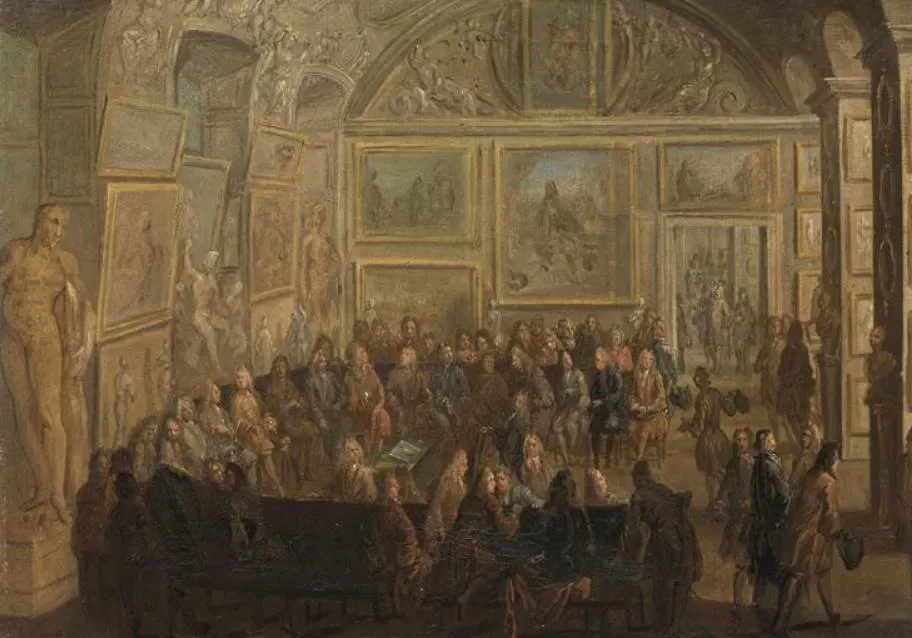
3. His career accelerated shortly after he got married in the early 1730s
The artist got married in the year 1733 to a woman named Marie-Jeanne Buzeau and the couple had 3 children together.
Just a year after he got married, he created a reception piece that allowed him to become a faculty member at the Académie de Peinture et de Sculpture. This so-called “morceau de réception” or “reception piece is called “Rinaldo and Armida” (1734).
This work combines classical architecture, a reference to his studies in Rome, and the exuberant Rococo style which he would perfect the following decades.
He was first promoted to professor, followed by the position of rector at the Academy, and he eventually finally made it big as the “Premier Peintre du Roi.” This means he was the court painter of King Louis XV of France, a position he earned in 1765.
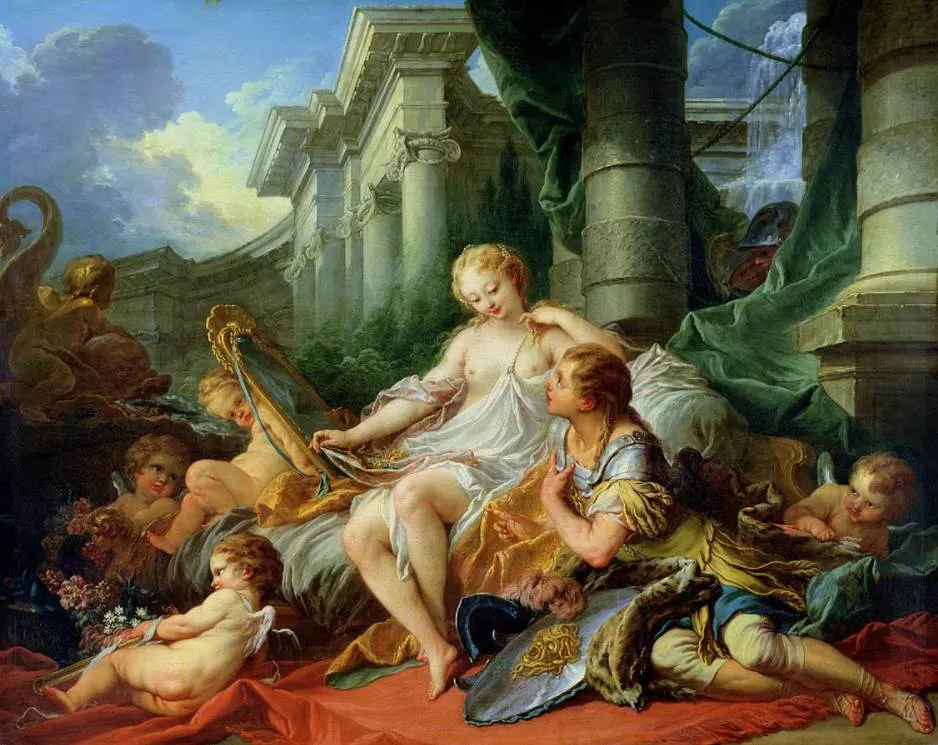
4. His art was inspired by some of the most famous Baroque artists
Although Boucher can be described as the leading Rococo artist of the 18th century, his art was inspired by some of the most renowned artists in history. His biggest influence was the oeuvre of Peter Paul Rubens, a Flemish Baroque artist who created a distinguishable style of art in the 17th century.
The artist created a wide variety of works, including paintings with classical themes, decorative allegories, and pastoral scenes. His work is defined by a profound sense of eroticism, often in idyllic locations.
French authors which are known as the “Goncourt brothers” once referred to Boucher as follows:
Boucher is one of those men who represent the taste of a century, who express, personify and embody it.
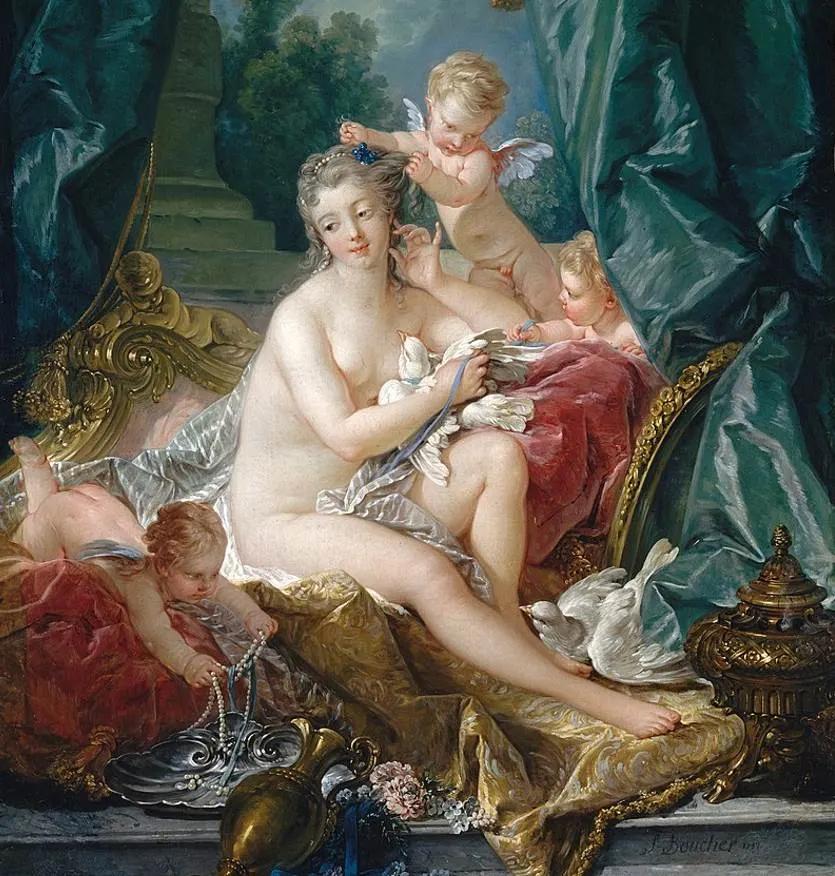
5. He was multi-talented and produced various types of artworks
The artist left behind a large collection of paintings, but he was an equally proficient draughtsman. His drawings were in high demand during his lifetime, and unlike drawings of artists that served as preparatory sketches of paintings, these were considered to be completed works of art.
Apart from being a painter and draughtsman, he was also a competent engraver, etcher, and tapestry designer. On top of that, he also created theatrical costumes and sets for operas and theater performances.
Yes, it’s fair to conclude that François Boucher was one of the most versatile artists of the 18th century, something that made him one of the celebrated decorative artists of his time.
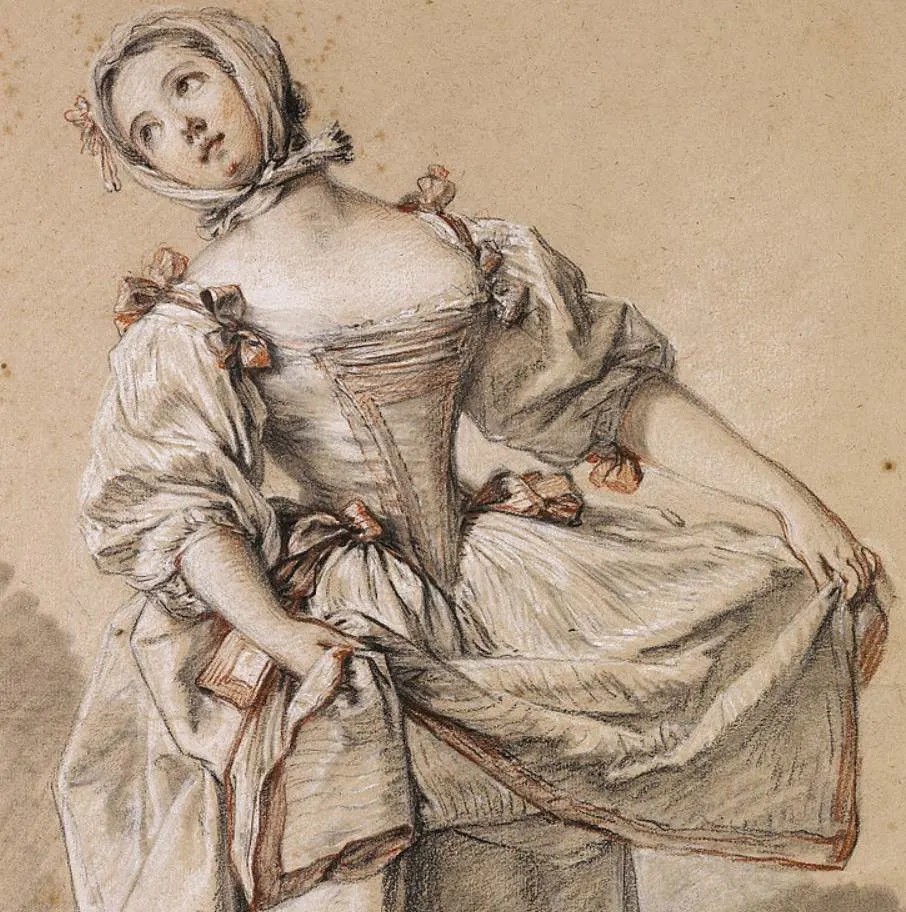
More interesting facts about François Boucher
6. The artist often depicted the main subject in an idyllic natural setting or grandiose landscape. He was, however, not a great fan of nature itself.
He is famous for referring to nature as “trop verte et mal éclairée,” something that translates to “too green and badly lite.”
7. One of the most famous patrons of François Boucher was a woman named Madama de Popmpadour (1721-1764). She was one of the mistresses of King Louis XV and one of the greatest admirers of the Rococo art movement.
This also means that this, who ended up becoming synonymous with Rococo, was often depicted by Boucher in various portraits wearing exuberant clothes and in grandiose settings.
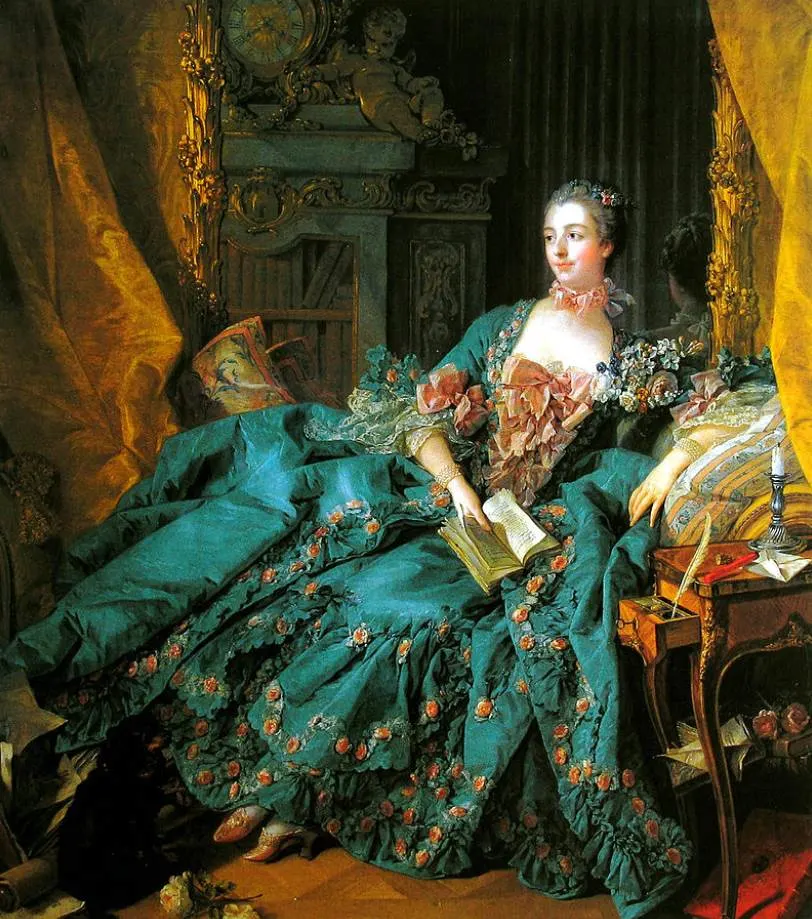
8. During his time at the Academy, Boucher also tutored many other famous artists. One of these was gemstone engraver Jacques Guay, the most prominent engraver at the time who was taught how to draw by Boucher.
During the final 3 years of his life, he also mentored one of the leading artists of the Austrian School of the 18th century named Martin Ferdinand Quadal (1736-1811).
Even more remarkable is that at the same time he started mentoring Jacques-Louis David (1748-1825), a man considered to be one of the leading Neoclassical artists in history.
9. It wasn’t his paintings that initially established his reputation at the royal court of France during the early phase of his career but his designs for court festivities.
He created a wide variety of these sets for activities at the Palace of Versailles and the Château de Fontainebleau. These were called the “Menus-Plaisirs du Roi” or “lesser pleasures of the King.”
The main pleasure of King Louis XV was most probably his countless mistresses. He probably got some enjoyment from these copious amounts of ceremonies and events at his palaces as well.
10. One of the most famous paintings by François Boucher is called “The Blonde Odalisque” (1752) or “Resting Girl.” It’s believed to depict Marie-Louise O’Murphy (1737-1814), a French girl with Irish ancestry.
She was one of the many “lesser mistresses” or “Petites maîtresses” of King Louis XV. What’s remarkable is that she became the youngest mistress of the King ever as she was only 14 years old. This was also her age when she posed for this remarkable work of art.

